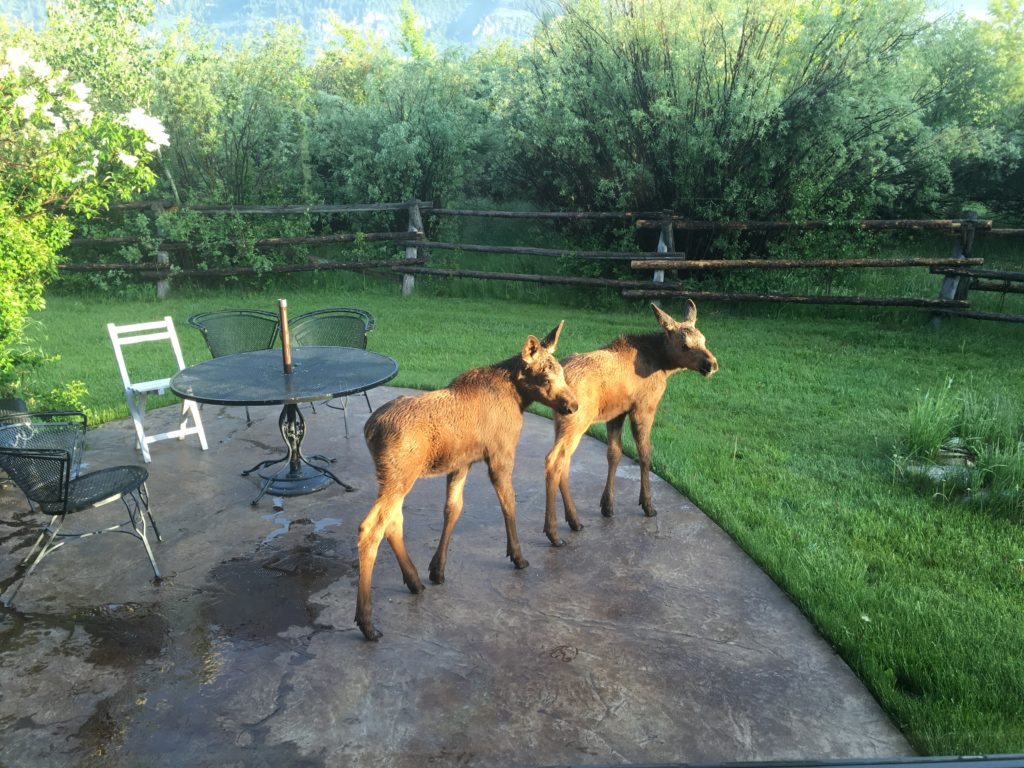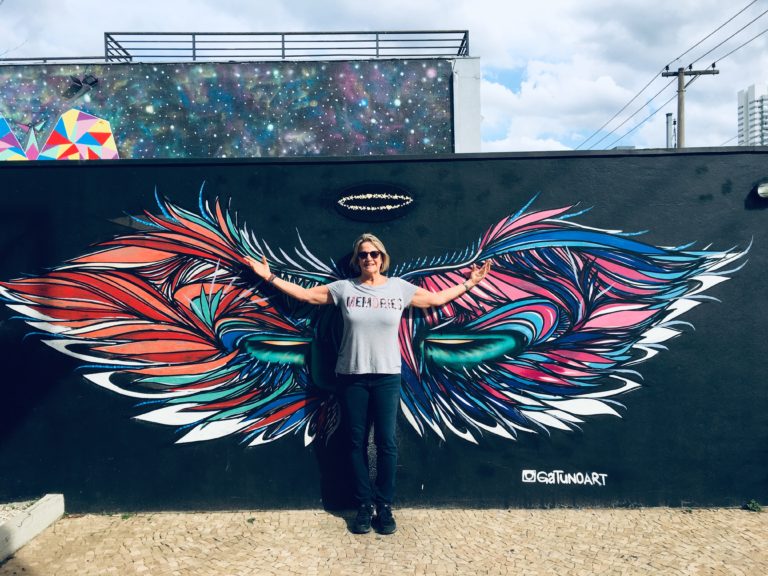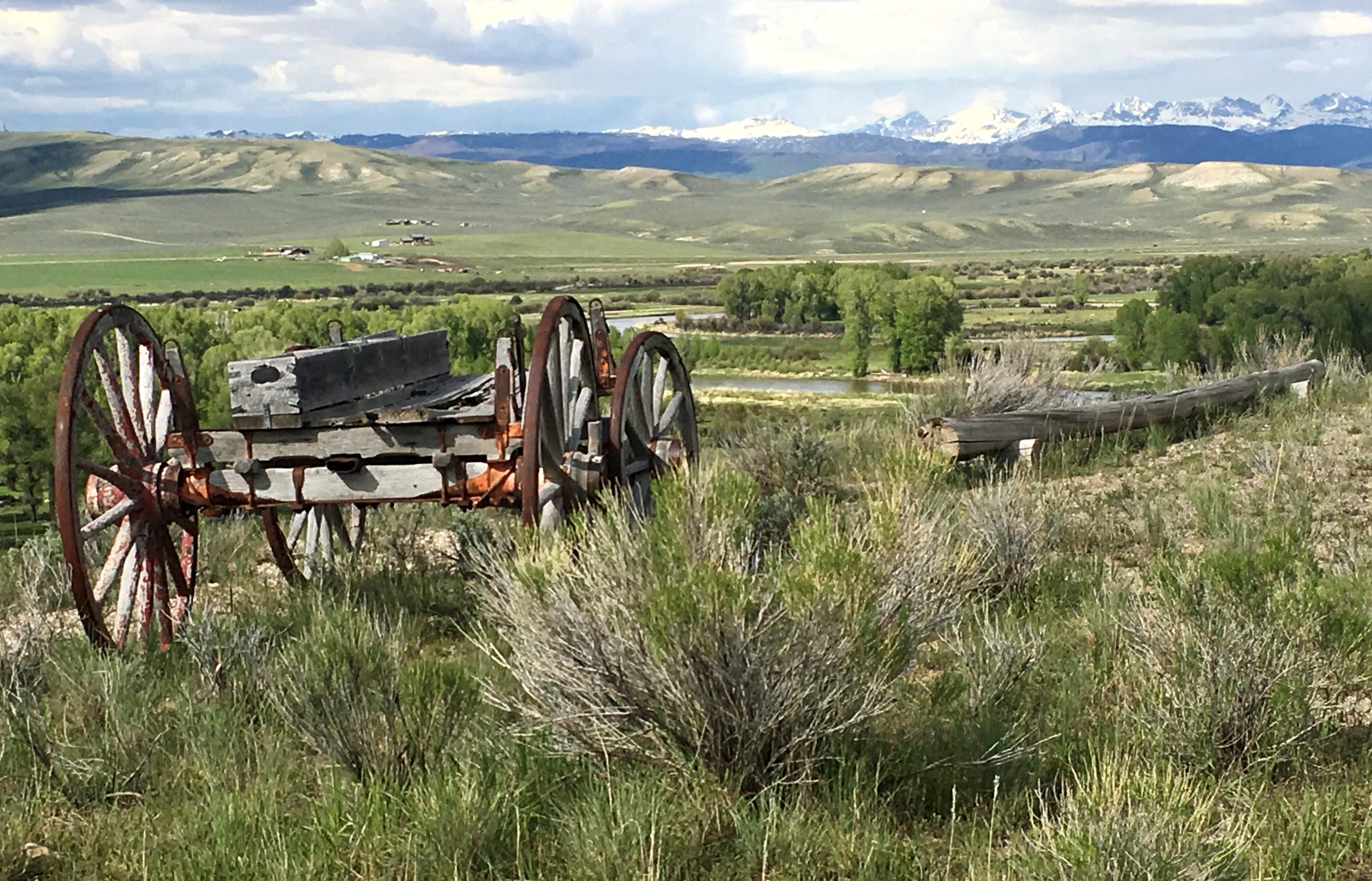Trout are plentiful but elusive in the fast-flowing Green River in western Wyoming. Anglers from big cities on the West and East Coasts arrive every summer by private jet to stay at rustic ranches in the shadow of the snow-capped Wind River Mountains. They rise early to cast fanciful, hand-tied flies into the clear emerald water in hopes of hooking an inquisitive cutthroat.
Fishing was not what drew mountain men, Native American Indians and traders to the lush Green River Valley nearly 200 years ago. These visitors on horseback and in covered wagons gathered at the confluence of Horse Creek and the Green River for a different type of adventure: the Green River Rendezvous.
Something akin to a country flea market or a trade fair today, rendezvous were raucous but joyous events. Animal skins and beaver pelts were swapped for supplies, guns and jewelry. Tin plates of grilled meat and bottles of whiskey were passed around blazing campfires as trappers recounted their harrowing exploits in the untamed west.
Green River Valley Popular For Rendezvous
Abundant water and grazing land for horses and pack animals made the Green River Valley an attractive site for rendezvous, which could last up to a month and attract more than 1,000 people. The last six Rocky Mountain rendezvous, which began in 1825, were on the Green River’s grassy banks.
The near extinction of beaver, along with fashion changes in Europe, signaled the end of the rendezvous in 1840. Trappers became scouts guiding settlers through the mountains to Oregon Territory. Today most of the land along the Green River between Daniel and Pinedale has been divided up into private cattle ranches. Fly anglers, mountain climbers and other outdoor enthusiasts now test their endurance in area mountains, lakes and streams.

But the Green River Rendezvous have not been forgotten. Pinedale, a laid-back town of 2,000 residents with no stop lights, keeps the spirit of the trapper gatherings alive. At the town’s annual rendezvous the second full weekend of July, mountain men in leather-fringed jackets demonstrate beaver trapping and skinning, rope making and blacksmith techniques. A tipi village invites visitors into the world of the Plains Indians. A tall tale contest, fiddle playing and dancing often run late into the night.
My visit to Wyoming last summer didn’t coincide with the festival. I was there for a reunion with friends – one of whom manages a private fly fishing ranch on the Green River near Pinedale. Her daughter, Kate, a seasoned ranch hand and Wyoming history buff, took the wheel of a four-wheel drive Suburban to introduce us to the sights of Pinedale and regale us with tales of rendezvous past and recent.
Trappers Point Reward: Panoramic Views
Our first stop required a steep climb up to Trappers Point. The reward: A spectacular panoramic view of the pastel colors of the Green River Valley melding into the purple, white-capped peaks of the Wind River Range. A stone monument recounts the rendezvous story, while an interpretive sign matches names with peaks of the 100-mile long Wind River Range. Kate pointed out a wildlife overpass across US 191 that enables safe passage for pronghorn antelope on their seasonal migrations between the mountains and the valley.
From there we headed up into the glorious Wind River Mountains, which are more rugged and less populated than the ranges of Colorado. The pristine beauty of Wyoming is showcased at roadside turnouts, where we snapped photos of glacier blue lakes Fremont and Half Moon. At an entrance to the vast Bridger National Forest, snow drifts still covered the shady side of mountain peaks and valleys.
After returning to Pinedale, Kate led us on a docent-quality tour of the Museum of the Mountain Man, a modern octagonal structure of stone and wood. The 15,000 square-foot building contains a rich collection of artifacts and displays documenting the Rocky Mountain fur trade and the colorful characters who risked their lives for the chance to get rich trapping.
Museum Dioramas Tell Stories of Mountain Men
The museum’s research library has one of the West’s best collections of rare history books about fur trading. But what likely impresses most visitors are the life-sized dioramas. Mountain man Hugh Glass’s epic struggle with a grizzly bear in a museum display is every bit as terrifying as the scene portrayed by Leonardo DiCaprio in the award-winning movie The Revenant.
At Kate’s recommendation, I bought a copy of the museum’s book The Fur Trade & Rendezvous of the Green River Valley. Paintings, photographs and stories capture the mountain men as they lived – some in the words of the trappers themselves. Kit Carson vividly describes how he nearly starved to death on his way to the 1834 rendezvous at Green River.
I left Wyoming fascinated with the history of the Green River Valley. I’ll plan my next visit to coincide with rendezvous in Pinedale.
 As a journalist, I’ve written about crime for newspapers, business deals for magazines, cruise ship ports for online travel publications and industry trends for websites. My focus now is exclusively on travel.
As a journalist, I’ve written about crime for newspapers, business deals for magazines, cruise ship ports for online travel publications and industry trends for websites. My focus now is exclusively on travel. 


Great story Barbara! I hope you will add me to your circulation list to get a notification when you publish your next story.